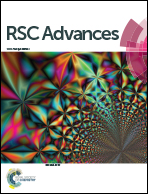Biomass-derived activated carbon/sulfur composites as cathode electrodes for Li–S batteries by reducing the oxygen content
Abstract
Corncob-derived activated carbon/sulfur as the cathode electrode for lithium sulfur batteries shows a good electrochemical performance, but the capacity fades rapidly with increase of cycle time. The experimental results demonstrate that such capacity fading is closely related to oxygen content of the activated carbon matrix. To investigate the effect of oxygen content on capacity fading, four carbon matrices (CAC, OAC, HAC, NAC) with different oxygen contents but similar surface areas and pore textures were obtained through a two-step method, namely, CAC was firstly oxygenated by nitric acid and then was reduced by H2 or NH3 at high temperature. The oxygen content of CAC, OAC, HAC and NAC was about 9.49 wt%, 20.41 wt%, 4.98 wt% and 4.74 wt%, respectively. Electrodes HAC/50S (H2-treated carbon/sulfur composite with 50% sulfur) and NAC/50S with low oxygen content show a big improvement compared to the CAC/50S electrode. The HAC/50S and NAC/50S electrode deliver a high initial discharge of 1443 and 1504 mA h g−1 respectively, which remain at 756 and 799 mA h g−1 after 200 cycles at 0.3C, demonstrating a good cycle capacity and stability. It is believed that the carbon matrix with low oxygen content can effectively trap the lithium polysulfides within the carbon framework, weakening the shuttle effect and thus slowing down the capacity fade to a certain degree. Therefore, one of the effective routes to improve the electrochemical performance of Li–S batteries is to reduce the oxygen content.



 Please wait while we load your content...
Please wait while we load your content...